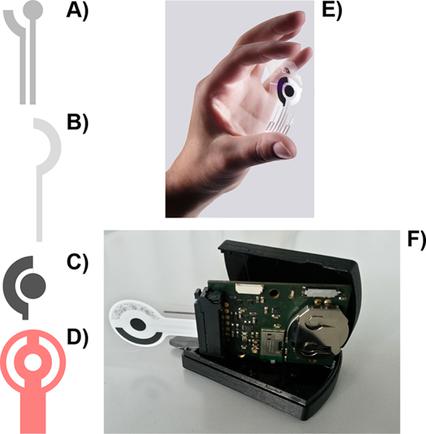当前位置:
X-MOL 学术
›
Electroanalysis
›
论文详情
Our official English website, www.x-mol.net, welcomes your
feedback! (Note: you will need to create a separate account there.)
Human Sweat Analysis Using a Portable Device Based on a Screen‐printed Electrolyte Sensor
Electroanalysis ( IF 2.7 ) Pub Date : 2017-12-13 , DOI: 10.1002/elan.201700672 Alicia Zoerner 1 , Susanne Oertel 1 , Michael P. M. Jank 1 , Lothar Frey 1 , Bernd Langenstein 2 , Thomas Bertsch 3
Electroanalysis ( IF 2.7 ) Pub Date : 2017-12-13 , DOI: 10.1002/elan.201700672 Alicia Zoerner 1 , Susanne Oertel 1 , Michael P. M. Jank 1 , Lothar Frey 1 , Bernd Langenstein 2 , Thomas Bertsch 3
Affiliation

|
Analysis of ammonium in human sweat during physical strain using a portable sensor device and enzymatic measurements are compared. The portable device is based on a screen‐printed electrolyte sensor connected with an evaluation board for data acquisition and transfer. During performance tests with artificial sweat, the sensor shows a low detection limit of 0.3 mM. Thus, the typical concentration range of ammonium in sweat lies within the working range of the sensor. We also demonstrate the necessity of the comparison measurement for verification of the correct performance of screen‐printed sensors and show how other components of human sweat influence the measured potential. Regarding the change in ammonium concentration during different levels of work out intensity, we point out a different behavior of what is expected physiologically. With this the importance of consideration of several parameters during sweating, like the sweat rate and other ingredients in human sweat, was demonstrated for correct determination of the ammonium concentration.
中文翻译:

使用基于丝网印刷电解质传感器的便携式设备进行人类汗液分析
比较了使用便携式传感器设备在身体劳损过程中人体汗液中的铵盐分析和酶促测量结果。便携式设备基于丝网印刷的电解质传感器,该传感器与评估板相连,用于数据采集和传输。在使用人造汗水进行性能测试期间,传感器显示出0.3 mM的低检测限。因此,汗液中氨的典型浓度范围在传感器的工作范围内。我们还演示了比较测量的必要性,以验证丝网印刷传感器的正确性能,并显示出人类汗液的其他成分如何影响所测量的电位。关于在不同水平的锻炼强度下铵浓度的变化,我们指出了生理预期的不同行为。
更新日期:2017-12-13
中文翻译:

使用基于丝网印刷电解质传感器的便携式设备进行人类汗液分析
比较了使用便携式传感器设备在身体劳损过程中人体汗液中的铵盐分析和酶促测量结果。便携式设备基于丝网印刷的电解质传感器,该传感器与评估板相连,用于数据采集和传输。在使用人造汗水进行性能测试期间,传感器显示出0.3 mM的低检测限。因此,汗液中氨的典型浓度范围在传感器的工作范围内。我们还演示了比较测量的必要性,以验证丝网印刷传感器的正确性能,并显示出人类汗液的其他成分如何影响所测量的电位。关于在不同水平的锻炼强度下铵浓度的变化,我们指出了生理预期的不同行为。











































 京公网安备 11010802027423号
京公网安备 11010802027423号